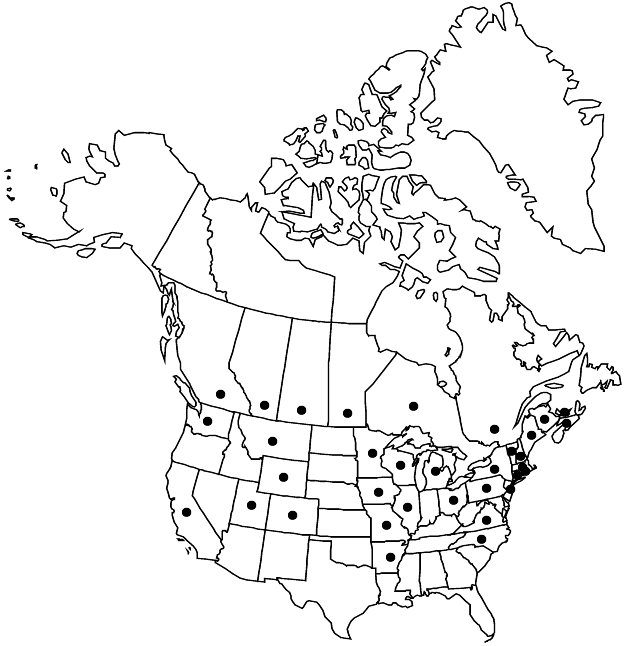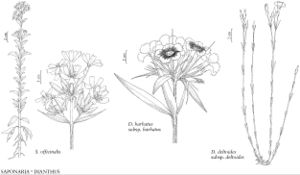Dianthus deltoides subsp. deltoides
Plants cespitose, matted. Stems ascending, simple proximally, branched distally, (4.5–)10–40 cm, puberulent; sterile shoots matted, 3–6 cm. Leaves: sheath 0.5–1.5 mm, ca. equaling stem diam.; blade linear to linear-lanceolate (flowering stems) or oblanceolate (sterile stems), 0.6–2.6 cm, green, margins ciliate. Inflorescences open, 2–4-flowered cymes or often flowers solitary; bracts absent; bracteoles 2 (or 4), green, ovate, ca. 1/3–1/2 times as long as calyx, herbaceous with ± scarious margins, apex aristate. Pedicels 4–12(–30) mm. Flowers: calyx 25–30-veined, 10–17 mm, glabrous or minutely pubescent, lobes narrowly lanceolate to linear, 3–5 mm; petals light or dark pink to purple (rarely white), often with darker band at base of blade, bearded, 4–9 mm, apex dentate. Capsules 12–13 mm, somewhat shorter than calyx. Seeds 1.1 mm. 2n = 30 (Europe).
Phenology: Flowering early summer.
Habitat: Roadsides, meadows, shores, open woods, waste places
Elevation: 40-2700 m
Distribution

Introduced; Alta., B.C., Man., N.B., N.S., Ont., P.E.I., Que., Sask., Ark., Calif., Colo., Conn., Ill., Iowa, Maine, Mass., Mich., Minn., Mo., Mont., N.H., N.J., N.Y., N.C., Ohio, Pa., R.I., Utah, Vt., Va., Wash., Wis., Wyo., Europe, introduced in e Asia (China, Japan, Russian Far East).
Discussion
Subspecies deltoides is often cultivated and occasionally escapes, perhaps not persisting in the northern part of its range.
Selected References
None.
